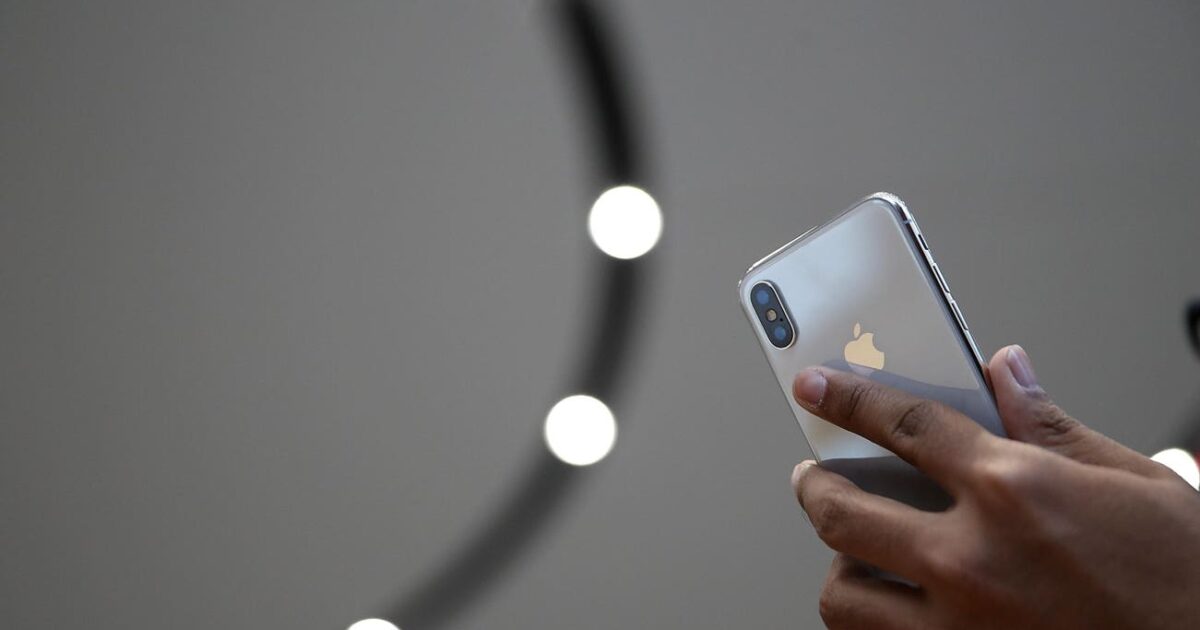New iPhone Warning — These Models Will No Longer Receive Updates

Apple has just added two devices to its “vintage” list — a list of devices that do not receive … More
Update May 25: This article, originally published May 23, has been updated to include a list of vintage devices and security expert views on the risk of outdated iPhones.
Apple’s iPhones are expensive — and potentially getting more so with the introduction of tariffs on goods from China. But Apple only updates its iOS software on newer devices, meaning at a certain point, it’s a good idea to replace your iPhone to ensure you receive patches for security holes.
For some iPhone users, that day is arriving soon, because Apple has just added two devices to its “vintage” list — a list of devices that do not receive routine software updates and are no longer guaranteed to be repairable at Apple’s stores.
The two iPhones just added to the vintage list are the iPhone 8 (64GB and 256GB) and the iPhone 7 Plus. Apple typically adds iPhones to the list when they are around five years old.
Apple Vintage Products — What Does This Mean?
According to Apple, products are considered vintage when Apple stopped distributing them for sale more than five and less than seven years ago. After that, they become “obsolete.”
Owners of iPhone, iPad, iPod, Mac, Apple TV, Apple Watch, AirPods, Apple Vision Pro, and Beats products may obtain service and parts from Apple service providers for a minimum of five years from when Apple last distributed the product for sale, the iPhone maker says on its website.
Service and parts may be obtained for longer, as required by law or for up to seven years, subject to parts availability, Apple adds.
Meanwhile, the iPhone maker’s Mac laptops may be eligible for an extended battery-only repair period for up to 10 years from when the product was last distributed for sale, subject to parts availability.
“Apple discontinues hardware service for certain technologically-obsolete products,” Apple says. “Your product is supported by ongoing OS updates and backed by a network of more than 5,000 Apple-certified repair locations that you can count on if something unexpected happens.”
The Security Risks Of Vintage iPhones
As Apple confirms that some older iPhone models will no longer receive iOS updates, it is important to understand the security implications, says Adam Boynton, senior security strategy manager EMEIA at security outfit Jamf. “These updates are not just about new features. They deliver essential security patches that protect against vulnerabilities, including those that are actively being exploited,” he warns.
While outdated devices may appear to be lower-value targets, cybercriminals often operate at scale and “look for any opportunity,” Boynton adds. “A single unpatched device, especially one with access to sensitive data or corporate systems, can become the entry point for a broader compromise.”
He advises organizations and individuals to “take a proactive approach” to iPhone security. “It is not about always having the latest iPhone. What matters most is that a device can receive the latest iOS updates. Staying current ensures users benefit from Apple’s most recent security protections and significantly reduces the risk of compromise.”
Apple’s Vintage And Obselete iPhones And iPads
The following Apple iPhones are considered vintage worldwide.
- iPhone 4 (8GB)
- iPhone 5
- iPhone 6s (16GB, 64GB, 128GB)
- iPhone 6s Plus
- iPhone SE
- iPhone 7 Plus
- iPhone 8 (64GB, 256GB)
- iPhone 8 (PRODUCT)RED™
- iPhone 8 Plus (PRODUCT)RED™
- iPhone X
- iPhone XS Max
iPhone products obsolete worldwide:
- iPhone
- iPhone 3G (China mainland) 8GB
- iPhone 3G 8GB, 16GB
- iPhone 3GS (China mainland) 16GB, 32GB
- iPhone 3GS (8GB)
- iPhone 3GS 16GB, 32GB
- iPhone 4 CDMA
- iPhone 4 CDMA (8GB)
- iPhone 4 16GB, 32GB
- iPhone 4 GSM (8GB), Black
- iPhone 4S
- iPhone 4S (8GB)
- iPhone 5C
- iPhone 5S
- iPhone 6
- iPhone 6 Plus
- iPhone 6s (32GB)
- iPhone 6s Plus (32GB)
The following iPads are considered vintage:
- iPad Air Cellular
- iPad Air Cellular (TD LTE)
- iPad mini 4 Wi-Fi
- iPad mini 4 Wi-Fi + Cellular
- iPad Pro 10.5-inch Wi-Fi
- iPad Pro 10.5-inch, Wi-Fi + Cellular
- iPad Pro 12.9-inch (2nd generation) Wi-Fi
- iPad Pro 12.9-inch (2nd generation) Wi-Fi + Cellular
- iPad Wi-Fi + 4G, CDMA
- iPad Wi-Fi + 4G, GSM
- iPad (5th generation) Wi-Fi
- iPad (5th generation) Wi-Fi + Cellular
- iPad (6th generation) Wi-Fi
- iPad (6th generation) Wi-Fi + Cellular
iPad products obsolete worldwide:
- iPad Air Wi-Fi
- iPad Air Wi-Fi + Cellular
- iPad Air Wi-Fi + Cellular (TD LTE)
- iPad Air 2 Wi-Fi
- iPad Air 2 Wi-Fi + Cellular
- iPad mini Wi-Fi, 16GB, Gray
- iPad mini Wi-Fi + Cellular, 16GB, Gray
- iPad mini Wi-Fi + Cellular, MM, 16GB, Gray
- iPad mini Wi-Fi
- iPad mini Wi-Fi + Cellular
- iPad mini Wi-Fi + Cellular (MM)
- iPad mini 2 Wi-Fi
- iPad mini 2 Wi-Fi + 4G, GSM + CDMA
- iPad mini 3 Wi-Fi
- iPad mini 3 Wi-Fi + Cellular
- iPad mini 3 Wi-Fi + Cellular (TD-LTE)
- iPad (4th generation) Wi-Fi
- iPad (4th generation) Wi-Fi + Cellular
- iPad (4th generation) Wi-Fi + Cellular (MM)
- iPad [original]
- iPad 3G
- iPad (3rd generation) Wi-Fi
- iPad (3rd generation) Wi-Fi + Cellular
- iPad (3rd generation) Wi-Fi + Cellular (VZ)
- iPad Wi-Fi
- iPad Wi-Fi + 3G
- iPad Wi-Fi + 4G
- iPad Wi-Fi + 4G (Verizon)
- iPad 2 Wi-Fi
- iPad 2 Wi-Fi + 3G
- iPad 2 Wi-Fi + 3G (Verizon)
- iPad Pro 9.7-inch Wi-Fi
- iPad Pro 9.7-inch Wi-Fi + Cellular
- iPad Pro 12.9-inch Wi-Fi
- iPad Pro 12.9-inch Wi-Fi + Cellular
New iPhones On Apple’s Vintage List — What Does This Actually Mean?
In reality, the transition to a new iPhone after the old one becomes vintage can wait up to a couple of years. While the iPhone 8 and iPhone 7 Plus won’t get the long list of software updates issued by Apple, they will usually receive patches for serious security holes.
For example, when Apple releases an upgrade for its latest operating system iOS 18, this will often come alongside an update for older iPhones — especially if the flaw has been exploited in real life attacks. This makes it important for users of older devices to ensure they are up to date with the latest version of the iOS software, even if the longer list of updates isn’t available to you.
As for repairs, Apple says it does guarantee your iPhone can be fixed, but it’s only when your device becomes older than seven years that this becomes a more widespread issue. Apple will replace parts after five years if they are still available, but after seven years, you probably can’t get your iPhone fixed.
At the moment, times are tough and many people can’t afford a new iPhone. So if you own a iPhone 8 or iPhone 7 Plus, you can wait two more years and still stay secure with important updates.
If you are a likely target of attack, however, such as a business professional in certain sectors, journalist or dissident, it makes sense to apply the latest update containing the full list of fixes. In this case, replace your iPhone soon if you can.
Either way, it’s integral to keep your iPhone up to date with the latest software. Go to Settings > General > Software Update and download the latest version to keep your iPhone safe.
